Exploring Meru National Park: A Comprehensive Visitor's Guide
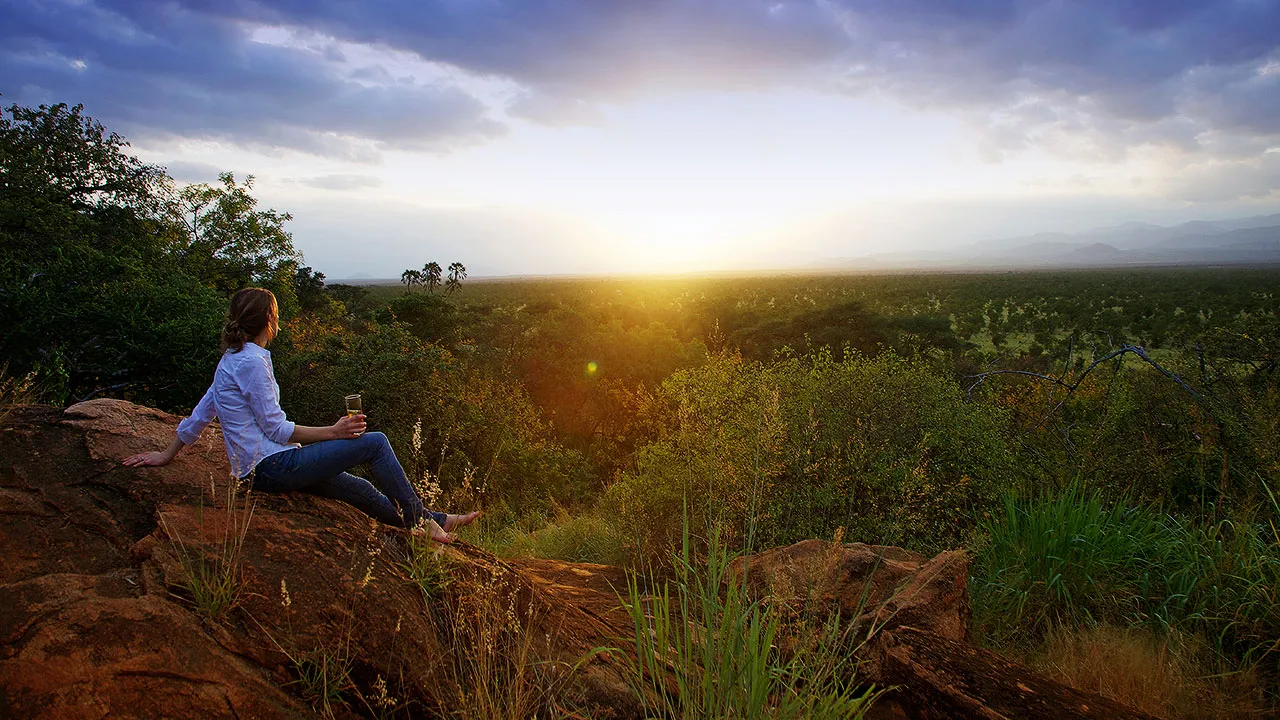
Tucked away in the scenic landscapes of eastern Kenya, Meru National Park beckons adventurers and wildlife enthusiasts to its rugged beauty, diverse ecosystems, and captivating wildlife encounters. From vast savannah plains to lush riverine forests and meandering riverbanks, this hidden gem offers a safari experience like no other.
Join us as we delve into the pristine wilderness of Meru National Park, where every moment is filled with discovery, wonder, and the thrill of encountering Africa’s wild animals.
Plan Your Safari of Meru National Park, Kenya with Us
To book your tour of Meru National Park, we invite you to contact us via phone or WhatsApp at +254-704-532-105. You can also connect with us via email at safarioffers@kenyaluxurysafari.co.uk or safarioffers@ajkenyasafaris.com.
From romantic getaways to family fun, and group adventures, our Senior Consultant, James Gatheru is on hand to help customise a memorable safari.
Meru National Park Kenya - Photos
Discovering Meru National Park Kenya
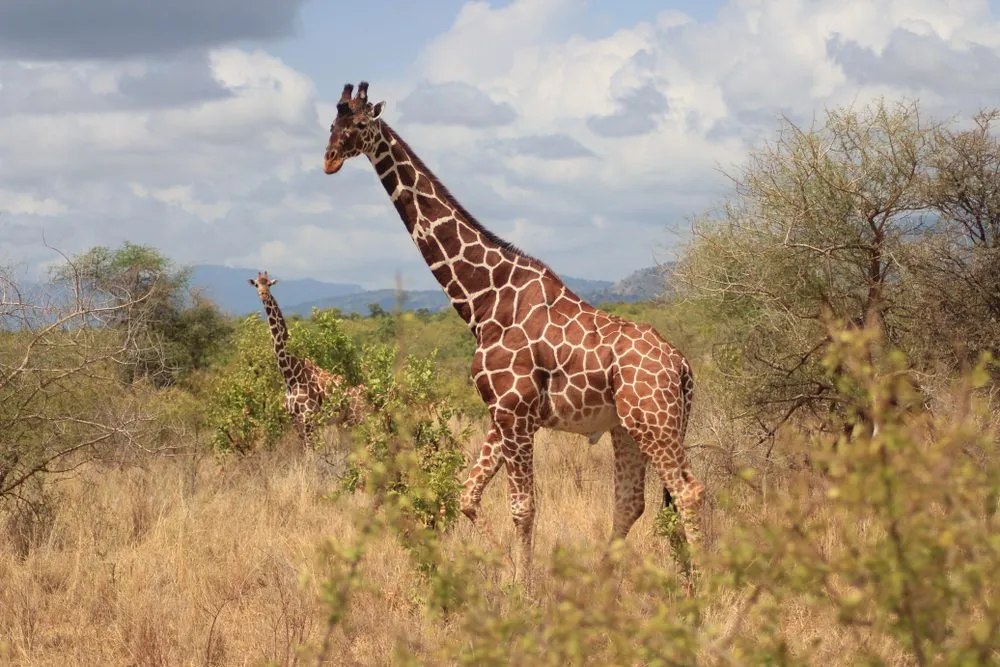
Established in 1966 and made famous by the best-selling book and film adaptation Born Free, the Meru National Park was a popular safari destination.
Unfortunately, the park fell into neglect in the 80s and became off-limits when poaching activities spiralled out of control wiping out the entire rhino population. It was in the late 90S that the government stepped up anti-poaching measures, implemented strong security and restored the park.
Meru National Park unfolds in diverse landscapes comprising woodlands, riverine habitats, wide open plains grasslands with tall grass cover, and termite moulds. Across the park, are 13 rivers (most of which stem from River Tana) and numerous mountain-fed streams.
These water sources ensure Meru National Park remains a lush green paradise compared to Masai Mara or Tsavo East which are dry savannah landscapes.
The ecosystems in Meru National Park provide habitat for mammals, reptiles and numerous bird species. You can explore the park’s remote corners on guided game drives, bush walks, or horseback safaris, encountering wild animals while enjoying the tranquil African bush.
The park experiences a hot arid climate with temperatures cooling down a bit in the wet season. It also experiences periodic winds known for raising big dust storms.
Meru National Park is part of the Meru Conservancy Area, along with the Bisanadi National Reserve, the Mwingi National Reserve and the Kora National Park. The conservation area was established to protect threatened and endemic northern wildlife species and the animals move freely across these national parks.
Mwingi National Reserve is the least accessible of the four parks but is ideal for fly camping, camel safaris, horseback safaris, and fishing. Bisanadi can be accessed from Meru National Park through the Murera Gate or by scheduled flights to the Korbessa airstrip.
At Bisanadi you can enjoy game viewing (it hosts many huge elephants), mobile camping, fishing and boating safaris on the Tana River. Visitors to Kora National Park can go on river rafting excursions, fishing, hiking, rock climbing, watching various bird species, and camping.
Meru Town and by extension, Meru County has a plethora of tourist activities that you can enjoy including the
- Devils Bridge Waterfall
- Lewa Wildlife Conservancy
- Ngare Ndare Forest Reserve
- Glacial Lake Michaelson
Wildlife Encounters
Several wildlife species occupy this complete wilderness including
- Big 5 (elephants, lions, leopards, buffalo, and rhinos)
- Cape buffaloes
- Impalas
- Grevy’s zebras,
- Lesser kudu
- Common beisa oryx
- Somali ostrich
- Gerenuk
- Reticulated giraffe
- Eland
- Bush pig
- Bohor reedbuck
- Antelope species including the Günther’s antelope and the dik dik antelope
The puff udder, cobra, and python also find refuge at this park while hippos and crocodiles occupy some rivers. The big cats like to hide in the tall grass cover while stalking their prey and can be hard to spot.
Bird watching Paradise
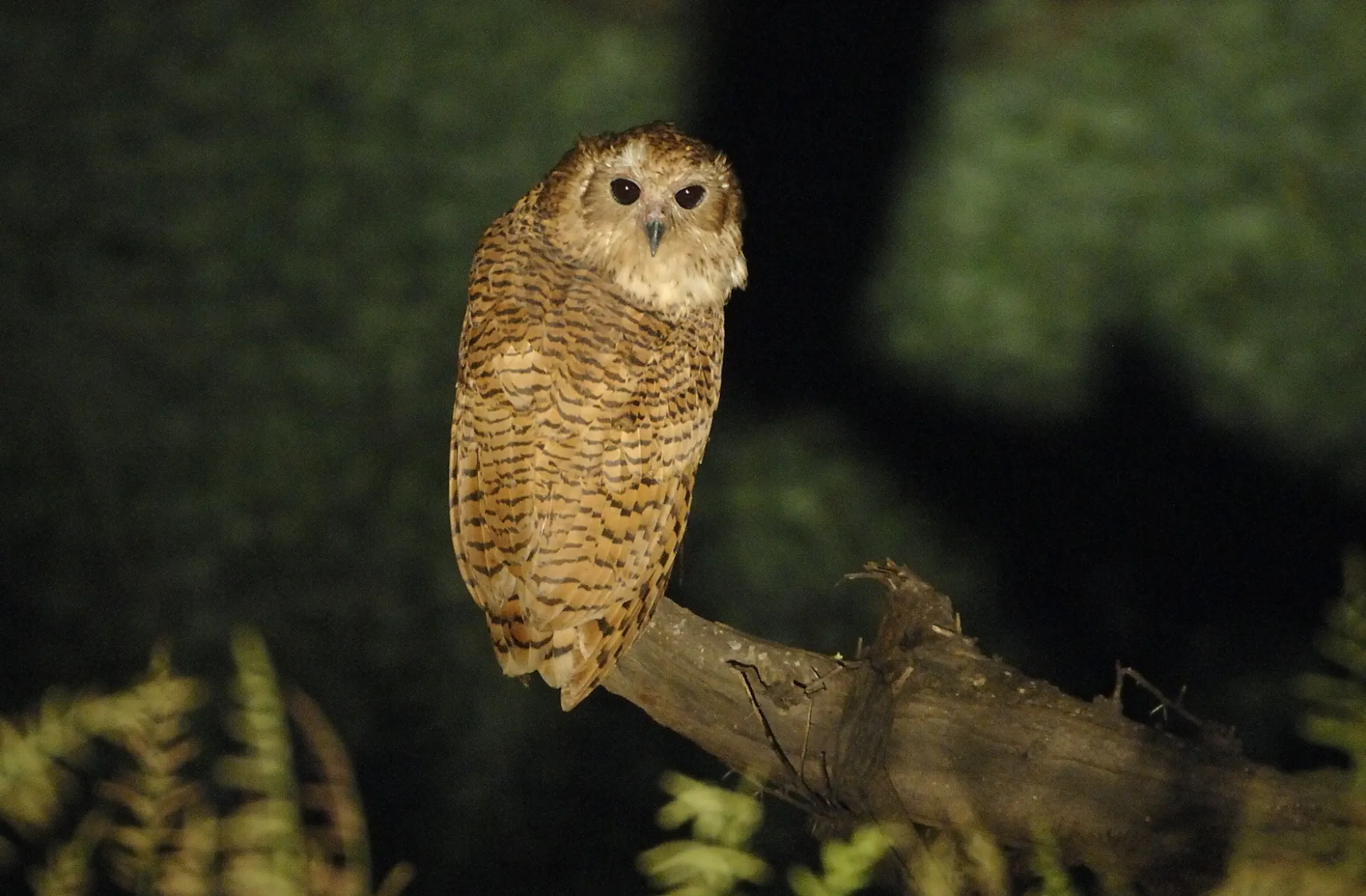
With over 400 bird species calling the Meru National Park home, you can marvel at the
Wattled Starling
Hartlaub’s bustard
Bee-eaters
Long-tailed fiscal.
Bird-watching enthusiasts may even spot the rare Peter’s Finfoot or the Pel’s Fishing Owl as it hunts by the river at night. Unlike other owls that move noiselessly in the night, the Pel’s Fishing Owl makes a deep, horn-like note as it skims the water surface for its prey.
Notable Landmarks
Wildlife is not the only attraction at Meru National Park. The park offers a diverse range of natural beauty, landscapes and picturesque landmarks.
Then Adamson’s Falls, also known as, Tana River Falls, is a popular spot for photography and picnics. The waterfall cascades down rocky steps, painting a spectacular picture against the backdrop of the park’s natural beauty.
Another must-visit landmark is the gravesite and camp of George Adamson, known as Kambi ya Simba, located near Kora National Reserve.
Other landmarks include
- Former home of conservationists George Adamson, Joy Adamson and Elsa the lioness
- The Adamson’s Fall
- The grave of Elsa the Lioness where Joy Adamson’s ashes were also buried
- The Mughwango Hill for views of Mount Kenya in central Kenya and the Meru plains
- The Black and White Rhino Sanctuary
Top Activities in Meru National Park
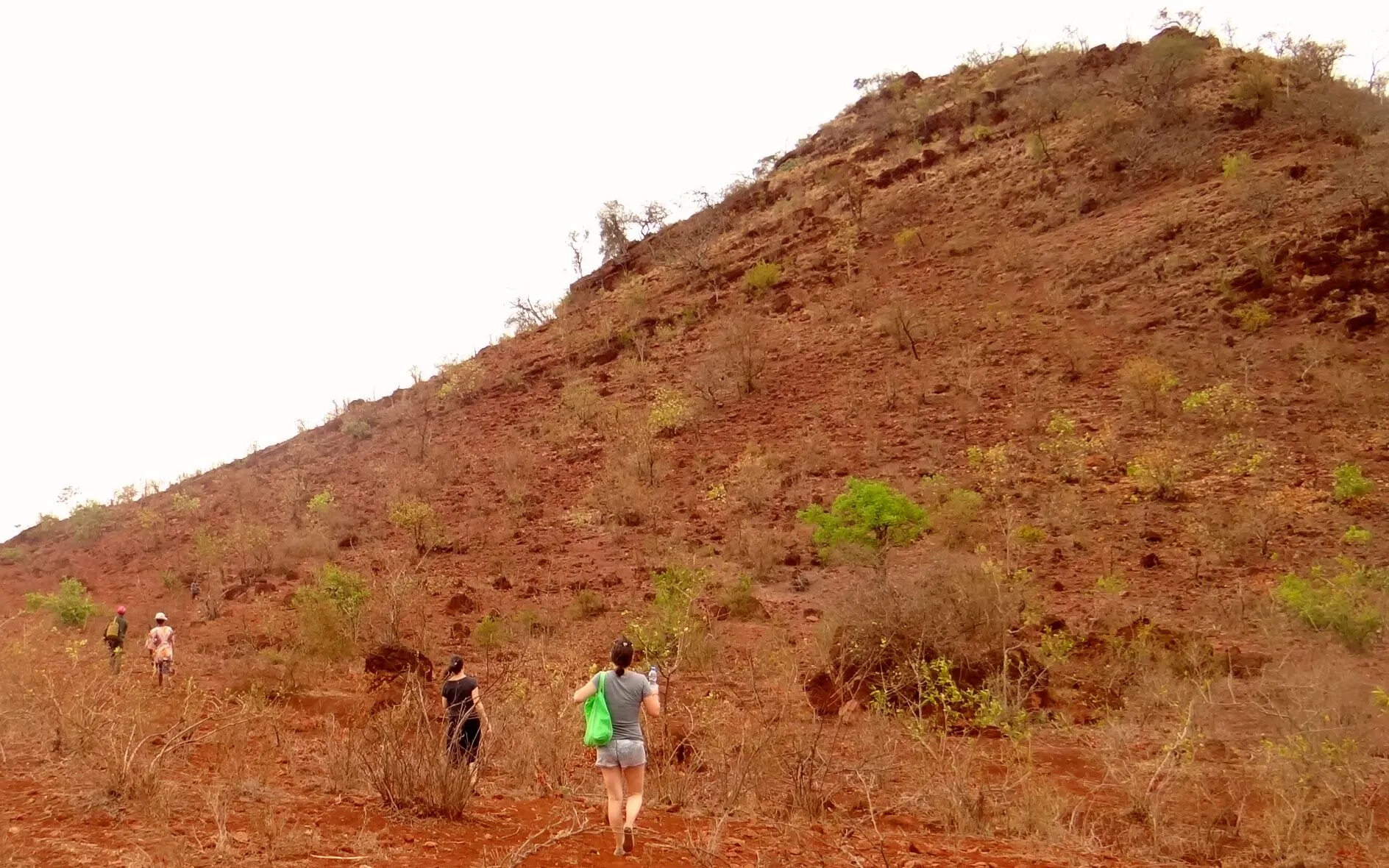
A variety of activities await you once you’re in Meru National Park. Here are some of the activities you can enjoy:
- Game drives
- Nature walks
- Cultural visits
- River Exploration
Game Drives
Game drives are a thrilling way to experience the park’s diverse wildlife species and habitats. Your tour operator or the camp can schedule morning, evening or full-day game drives.
If you crave a unique and more adventurous experience, special night drives can be arranged to allow you to experience nightlife in the Meru National Park. Elsa’s Kopje Camp is specially licensed to conduct night game drives.
Nature Walks and Hikes
Nature walks in the park perfectly complement your game drives, and allow you to admire the park’s biodiversity and scenic views on foot.
Led by knowledgeable park rangers, these walks are strictly regulated for safety, requiring all guests to be accompanied by rangers when venturing close to wildlife.
How about hikes?
There are at least four hiking trails at the Meru National Park.
- The Rhino Sanctuary hike takes you through the sanctuary where you can spot the rhinos alongside zebras and other wild animals.
- The Bisanadi hike leads you to the Bisanadi National Reserve where you can enjoy gorgeous views of the park and even spot elephant herds.
- The Kilima Mbogo hike takes you to Kilima Mbogo Hill offering panoramic views of the park and landscapes.
- Mt Kenya hike is the most challenging and ideal for experienced hikers. This hike takes you to the summit of the second-tallest peak in Africa and offers mesmerising views of the surrounding landscapes.
Cultural Visits and Community Engagement
Meru National Park is steeped in cultural heritage and history. It has connections to the local Meru and Borana communities, as well as notable conservation figures such as George Adamson and his wife Joy.
A two-hour drive from Meru National Park, past Maua town, you’ll find Meru Town, where the rich culture of the Ameru, Borana and Tharaka communities thrive. Visitors can learn about the traditions, customs, and way of life of the Meru people through cultural experiences, village visits, and interactions with local communities. These cultural experiences may include milking cows and cooking traditional meals.
The park’s cultural heritage is also reflected in its archaeological sites, rock art, and historic landmarks, providing insights into the region’s rich cultural tapestry.
Fishing and River Exploration
Fishing exploration in Meru National Park offers a unique and tranquil experience amidst the wilderness cover. The rivers are home to various fish species, offering anglers the chance to reel in a diverse catch.
Common fish species in the park’s waterways include tilapia, catfish, and barre. Whether you’re a novice angler or a seasoned fishing enthusiast, there’s something for everyone to enjoy as you test your skills against the park’s aquatic inhabitants.
Now, how about picking up a fishing rod and heading on one of the palm-lined banks in the park?
Planning Your Visit to Meru National Park, Kenya
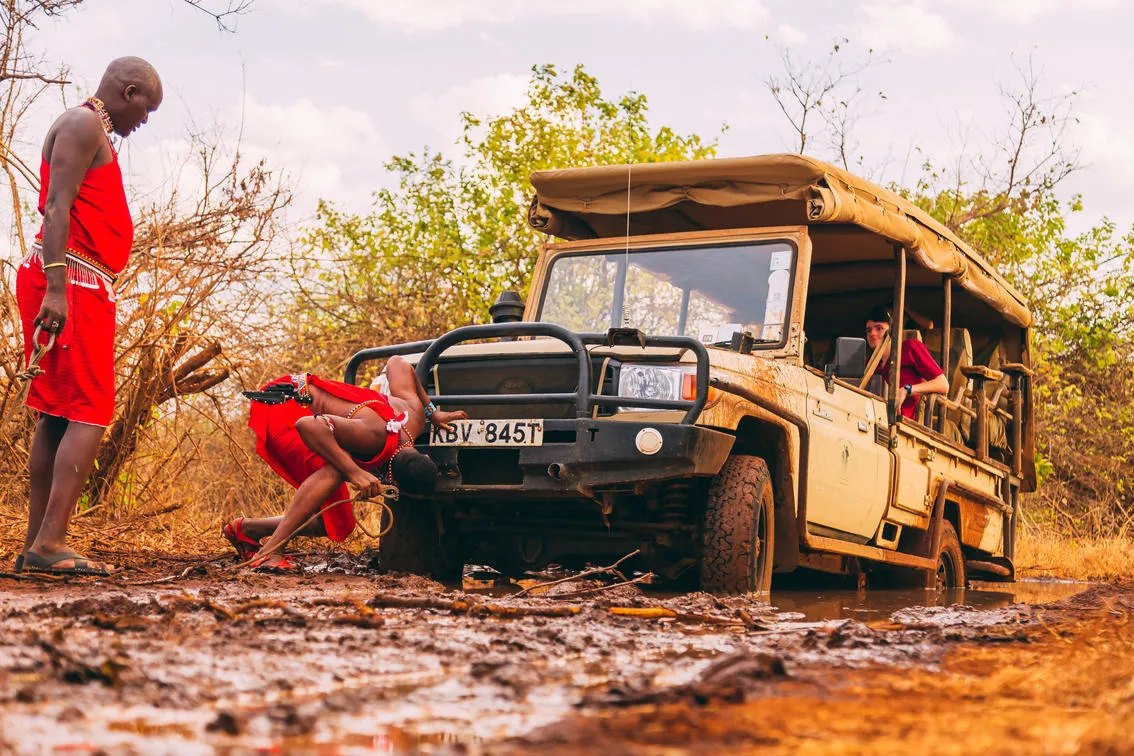
Proper planning is essential to maximise your experiences at the Meru National Park. Here are some top considerations:
Best Time to Visit
The long cool but dry season between July and October is optimal for wildlife viewing. During this time, animals are more likely to be seen congregating around permanent water sources, making it easier to spot them.
If you miss this season, January to March also marks a period conducive to game viewing in Meru National Park. It’s a shorter window for travel after the short rains of November and December. The wet season from late March to June causes wild animals to spread out across the park making sightings more challenging.
Getting to Meru National Park
To reach Meru National Park, you can take the scenic route by road transport or the speed and convenience of air travel. If you’re using road transport, the park has two access gates – Murera Gate (the main gate) and Ura Gate.
There are two routes to Murera Gate and one route to Ura Gate as below:
- Nairobi via Embu and Meru to Murera Main gate – distance – 295km
- Nairobi via Nyeri-Nanyuki and Meru to Murera gate – distance – 331km
- Nairobi via Embu all weather roads to Ura Gate – distance – 312km
For air travel, you can opt for scheduled flights from Wilson Airport to the Main airstrip at Kina, Mulika or Elsa’s Kopje airstrip. Domestic airlines that offer these flights include Kenya Airways, Air Kenya, and Safari Link.
Accommodation Options in Meru National Park
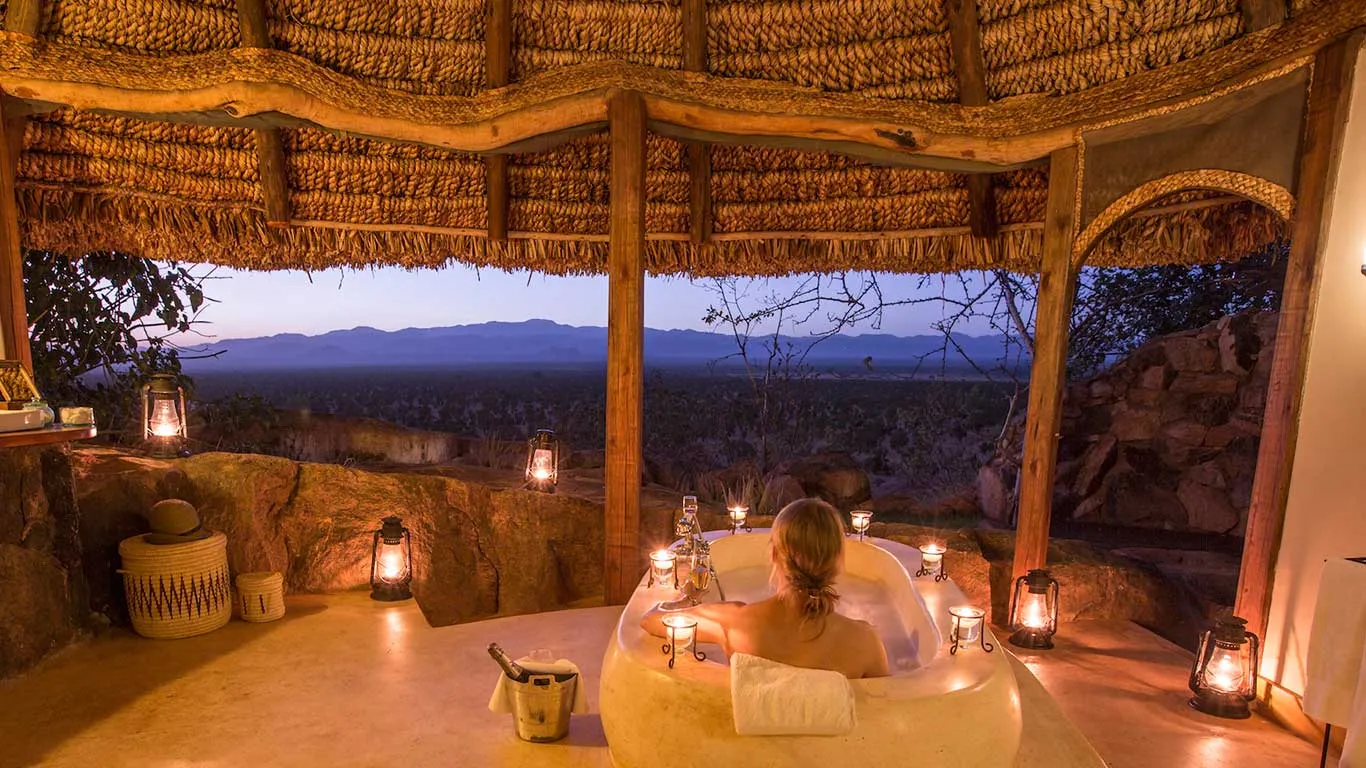
So, where can you stay once you reach Meru National Park? The park has both luxury, mid-range, and budget options.
Luxury lodges and camps offer spacious ensuite living areas, comfortable bedding, and private verandas or decks with panoramic views of the surrounding landscape. In this complete wilderness, you can enjoy gourmet cuisine prepared by skilled chefs, often featuring a blend of international dishes and locally inspired flavours.
These accommodations include infinity pools or plunge pools where guests can cool off and unwind after a day of safari adventures. Elsa’s Kopje Camp exemplifies high-end safari experiences allowing guests to sit at the lap of luxury during their stay at the park.
Mid-range camps in Meru National Park balance comfort, affordability, and an authentic safari experience. While they may not provide the same level of luxury as high-end lodges, they still offer essential facilities and services to ensure guests have a pleasant stay.
Some mid-range camps may offer outdoor seating areas or bonfire pits where guests can gather in the evenings to share stories and enjoy the starry African skies. Rhino River Camp, Ikweta Safari Camp, Leopard Rock Lodge, and Offbeat Meru Campsite are fantastic mid-range options that blend luxury and affordability.
Budget camps in Meru National Park cater to travellers seeking affordable accommodation without compromising the essence of a safari experience. They offer simple tented accommodation or rustic cottages with shared bathroom facilities.
The focus is on providing clean and comfortable lodging for budget-conscious travellers. Examples of budget accommodation include Murera Springs Eco Lodge, Murera bandas, Bwatherongi bandas, and Kinna bandas.
The Legacy of George and Joy Adamson
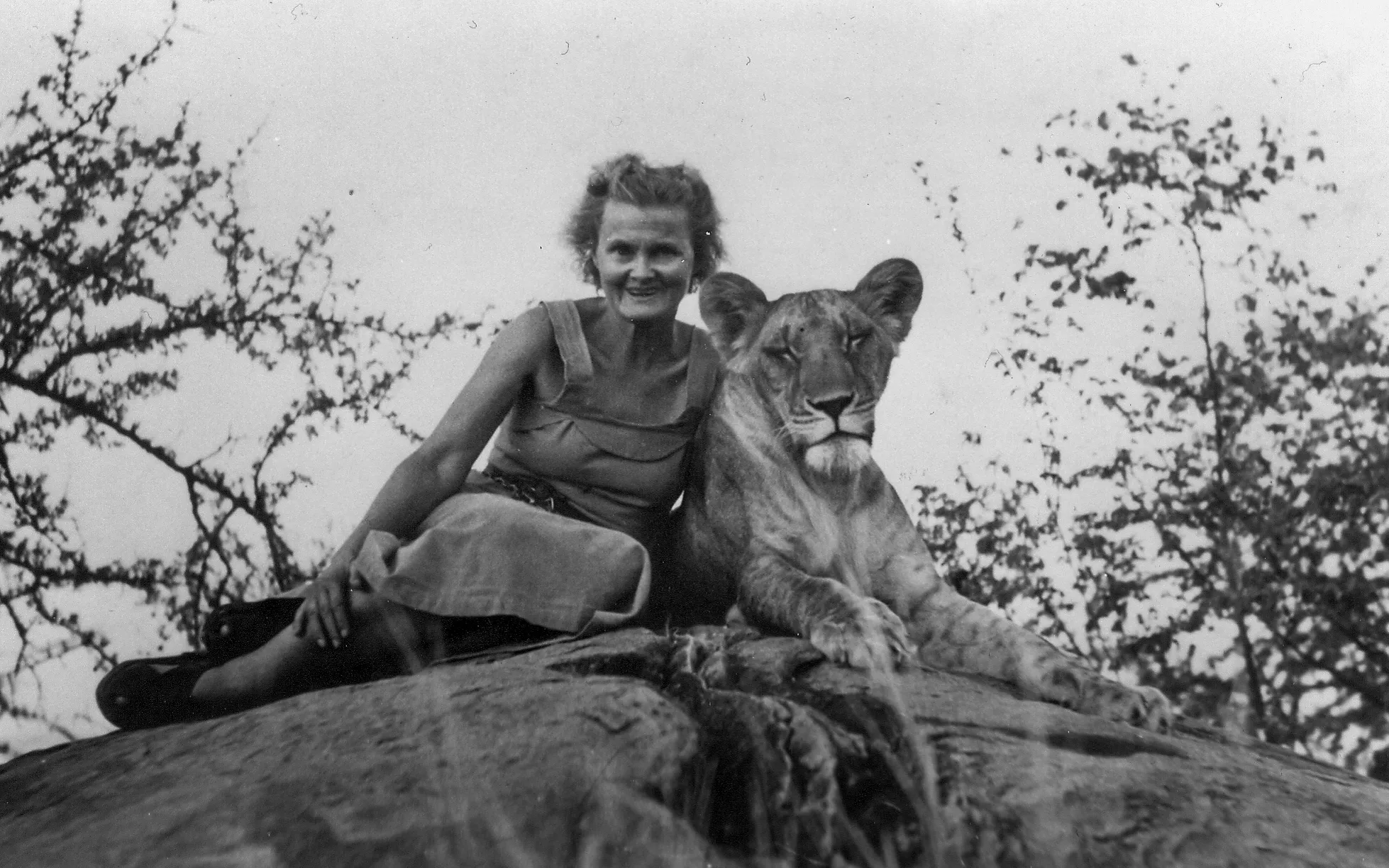
In addition to its natural wonders, the park is also linked to the legacy of conservation George and Joy Adamson. Their work with Elsa the Lioness gained international recognition and conservation value stemming from the ‘Born Free’ book and film.
In 1956, George Adamson was sent to shoot a marauding lion and its lioness and soon after heard the cries of three young cubs. He sent off two cubs to the Rotterdam Zoo in the Netherlands and kept one which his wife Joy named Elsa. Joy Adamson raised Elsa and she was like the house pet, but by age two, Elsa started manifesting a lion’s instincts.
Through a series of trials and errors as detailed in Joy’s book Born Free, Elsa the lioness was finally released into the Meru National Park. Elsa still maintained a close relationship with the Adamsons even after giving birth to her cubs. She died in George’s arms of tick fever.
George Adamson facilitated the successful transfer and release of Elsa’s cubs in Serengeti National Park in Tanzania. Upon her death, Joy’s ashes were buried next to Elsa’s grave in Meru National Park, Kenya. Adamson’s Falls was named was much to honour this brave couple that lived their lives around the big cats of Africa
Summary
Meru National Park, Kenya takes you through vast landscapes and diverse wildlife. It offers a range of activities including game viewing, bird watching, nature walks, and visiting its key landmarks. With a wide range of accommodations and activities, you can experience the thrill of being the wild and the tranquillity of nature. Talk to us today, to book your visit to Meru National Park today.
Frequently Asked Questions
The most common questions we get about Meru National Park are:
How Much Is the Entry Fee for Meru National Park?
The entry fee for Meru National Park is $52 per adult and $35 per child. These fees are applicable whether you use road transport or air travel.
What Is Meru National Park Known For?
Meru National Park is known as the setting for Joy Adamson’s book and movie adaptation ‘Born Free’, which revolves around the life of Elsa the Lioness. It’s also known for its large herd of elephants, the endemic reticulated giraffe, cape buffaloes, big cats, and rare bird species. Additionally, it hosts a rhino sanctuary that is home to the endangered black and white rhino species.
Is Meru Related to Kikuyu?
Meru is related to Kikuyu. Both tribes are of Bantu origin and are concentrated in central Kenya in the vicinity of Mount Kenya.
What Are the Best Times To Visit Meru National Park?
The best times to visit Meru National Park are during the cool-dry season from July to October or the short dry season in January and February. These periods offer the best wildlife viewing opportunities.
